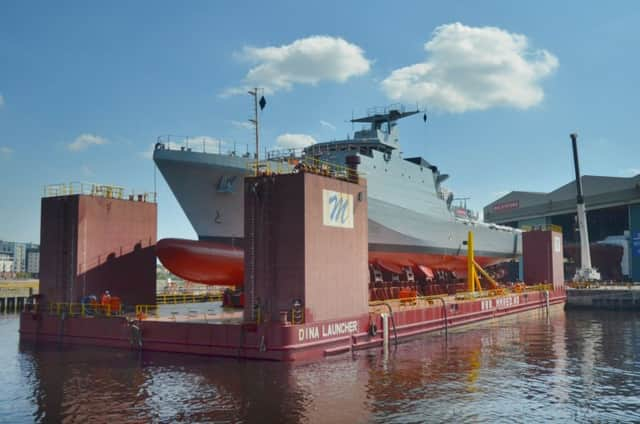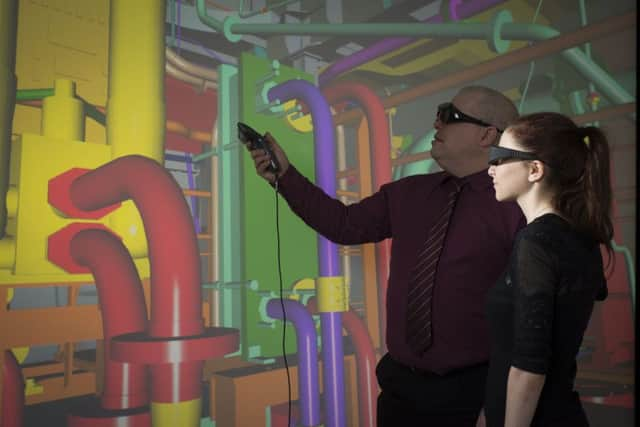Clyde yards embrace virtual reality for latest navy ships


But HMS Forth is also an example of the innovative technology used by Scottish shipbuilders in the 21st century.
The River class offshore patrol vessel, which was unveiled at the BAE Systems yard in Govan this week, is among the first to be built with a new operating system called Shared Infrastructure, which will be rolled out across the rest of the navy’s fleet over the next 10 years.
Advertisement
Hide AdAdvertisement
Hide AdDesigned by BAE, the hardware provides an easily updatable operating programme for warships, enabling all the systems needed to operate a vessel to be loaded onto a single console.


HMS Forth will be floated along the Clyde on a barge this weekend to the BAE yard at nearby Scotstoun, where finishing touches will be applied. The completed ship is expected to enter service in 2017.
It is one of three offshore patrol vessels ordered by the Ministry of Defence in 2014.
Before construction work began at Govan, the Forth’s design team were able to take advantage of so-called visualisation suites.
This technology creates full scale 3D ship prototypes - enabling engineering teams to virtually build and test the design of vessels in advance of the first steel being cut.


A laser tracking system allows operators to fly through a ship’s design from any angle and the ability to inspect and examine specific areas, equipment and systems.
This means potential engineering issues can be identified in real time, while the technology also enables greater collaboration with suppliers and customers, bringing them into the design process at an earlier stage.
BAE believes visualisation technology will transform the way it designs and builds warships.
Advertisement
Hide AdAdvertisement
Hide AdBy creating a virtual prototype, it can optimise a ship’s design and gain an understanding of the vessel and the experience of those serving on board before manufacturing begins.
The defence firm said it was committed to shipbuilding on the Clyde.
“We currently have three River class offshore patrol vessels in various stages of production in Glasgow,” a spokesman said.
“We are working with the Ministry of Defence and we aim to secure the manufacturing contract for two further ships of the same design which will increase the Royal Navy’s ability to defend UK interests at home and abroad and ensure continuity of shipbuilding production in Glasgow.”
Around 2,600 staff are currently employed by BAE and its contractors at the Clyde yards.
Fears of job losses on the river emerged last month when the UK Government revealed there was no confirmed start date for eight Type 26 frigates due to be built at Govan and Scotstoun.
The project to build the eight new frigates on the Clyde was promised before the 2014 Scottish independence referendum.
Since then the programme has been hit by delays leading to SNP claims that the UK government is reneging on its pre-referendum promise.
Advertisement
Hide AdAdvertisement
Hide AdA UK government spokesman said at the time it was committed to building ships on the Clyde and to the Type 26 programme.
They added the government would spend around £8bn on Royal Navy warships over the next decade.
